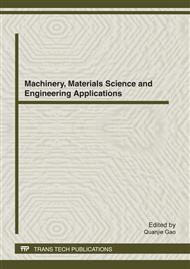p.628
p.634
p.639
p.645
p.650
p.655
p.660
p.667
p.673
Microstructural and Mechanical Properties of Autoclaved Saline Soil Brick: Part I: Microstructure Features
Abstract:
Effects of different components, autoclaving temperature and autoclaving time on the microstructure features and mechanisms of hydrothermal reactions of activated saline soil were investigated by using XRD, DAT and other microstructural analytical methods. Collected from Tianjin Binhai New District, the mainly raw materials used in this study are the saline soil ( 65%) supplemented with calcareous materials. The results demonstrate that with an increasing calcium to silicon ratio, the diffraction peaks of C2SH(A) and tobermorite fluctuate; the peaks increase initially, then dip down slightly before rising up again. With increasing autoclaving time, the order of generated hydration products is as following: C2SH(A) tobermorite gyrolite. Specifically, once autoclaving time reaches 3h, the changing trend of C2SH(A) to tobermorite becomes obvious, and the conversion from tobermorite to gyrolite can also be observed easily. The hydration products of autoclaved saline soil include mainly C2SH(A) and tobermorite, along with a small amount of CSH(B). Microscopic analysis observed by us reveals that a number of scattered, small and white tobermorite crystals are closely attached to quartz surface, which might play a key role in increasing the strength of the system.
Info:
Periodical:
Pages:
650-654
Citation:
Online since:
April 2012
Authors:
Keywords:
Price:
Сopyright:
© 2012 Trans Tech Publications Ltd. All Rights Reserved
Share:
Citation:


